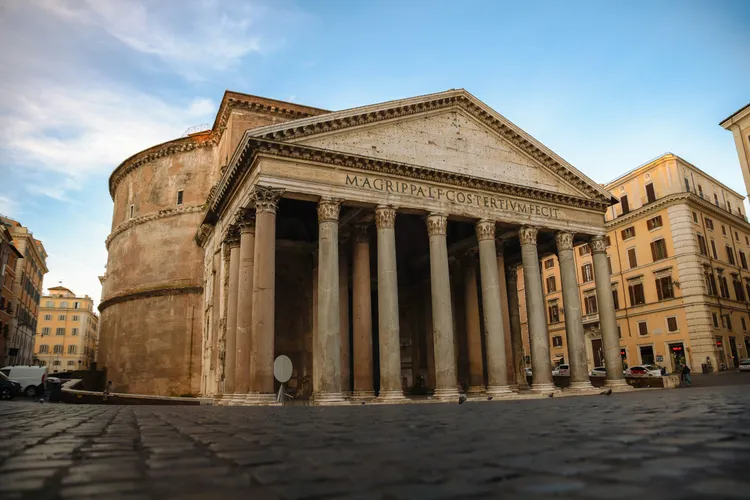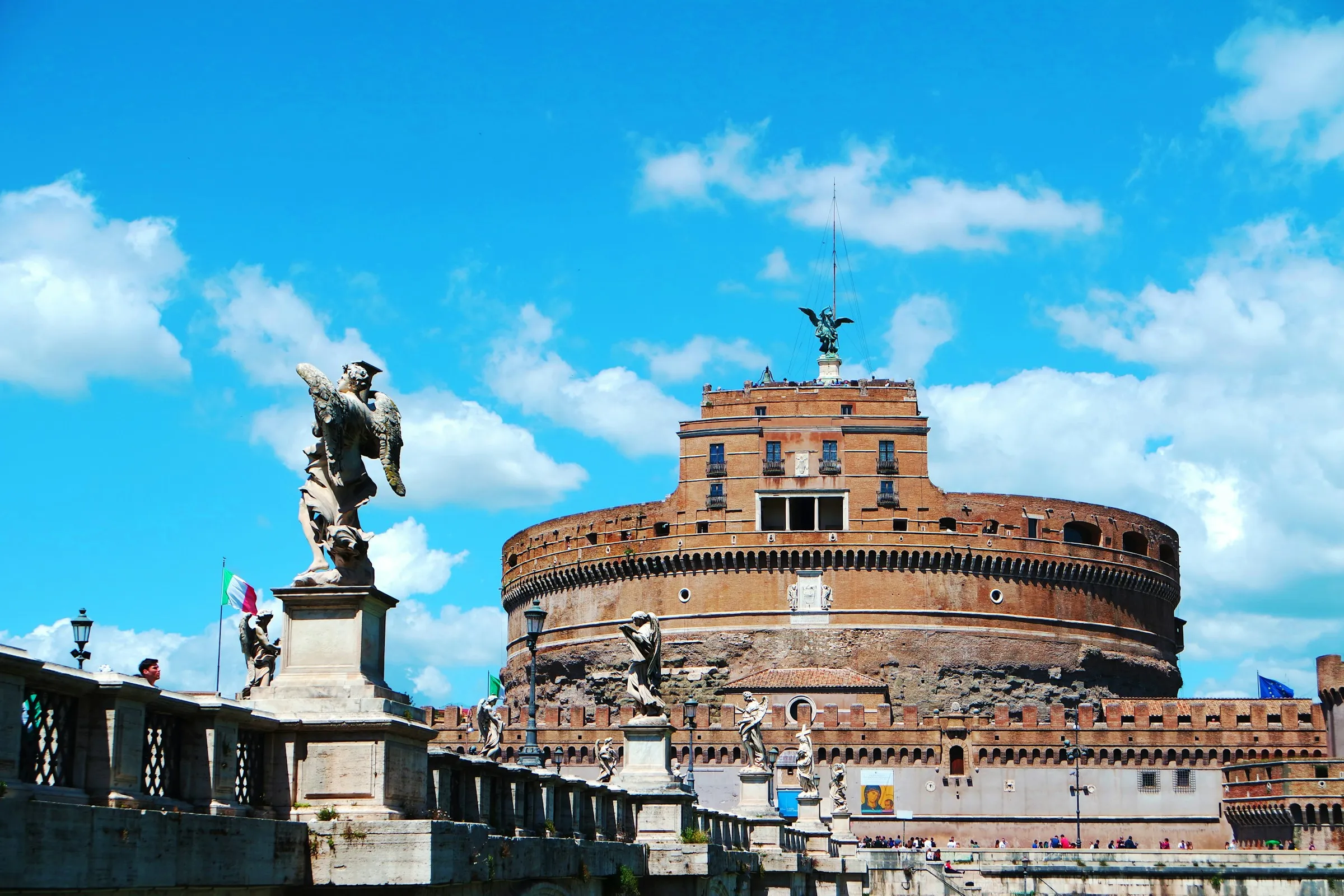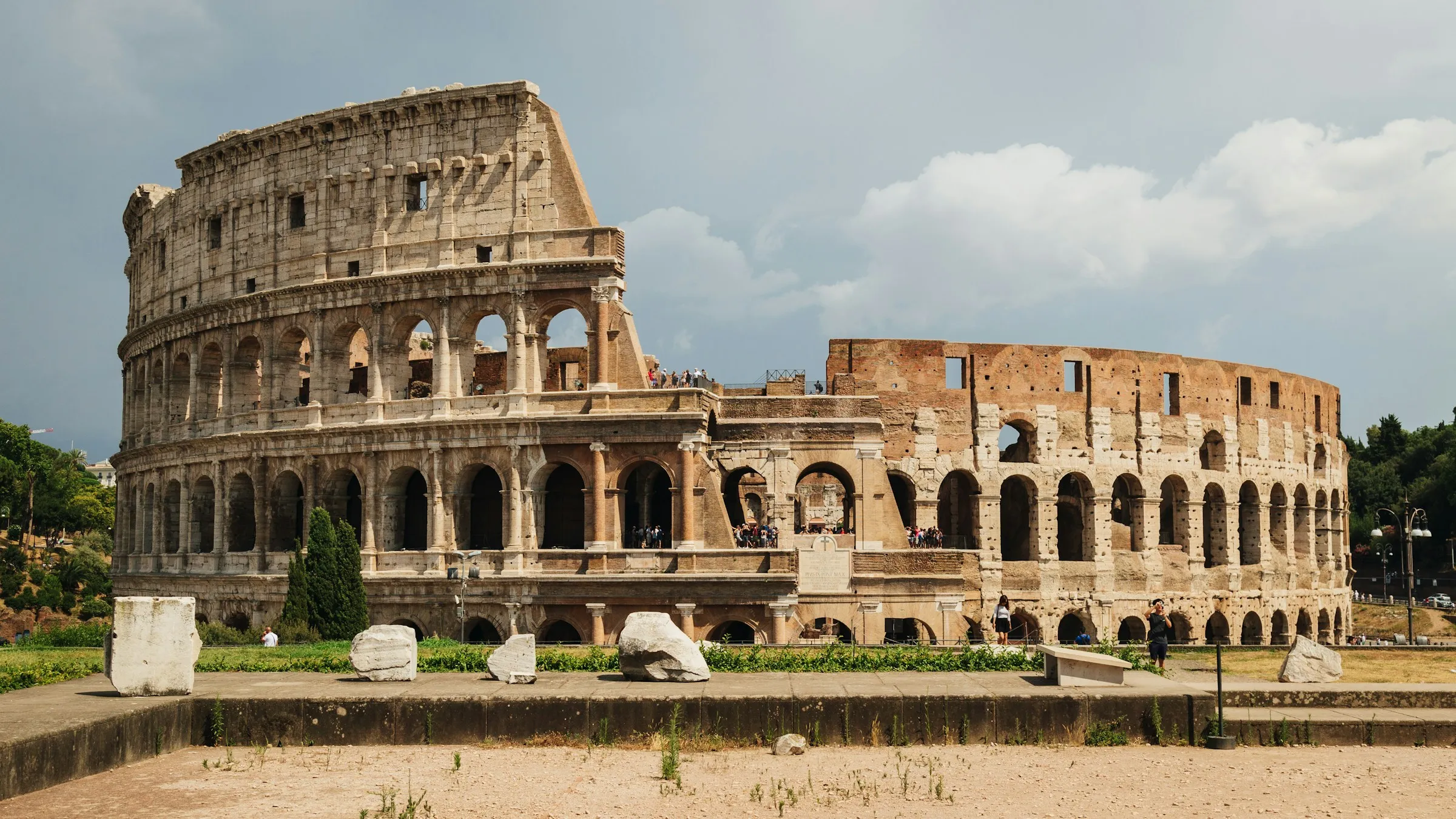The Pantheon has remained almost perfectly preserved for about 2,000 years since ancient Roman times. It’s said that “Those who travel to Rome without visiting the Pantheon arrive as fools and leave as fools,” making it an essential destination for any Rome itinerary. Known as the world’s largest stone structure, the Pantheon is a precious heritage that demonstrates the advanced architectural techniques of ancient Rome. This article will introduce you to the Pantheon’s history, highlights, and entry information in detail.
Basic Information About the Pantheon
History of the Pantheon - When Was It Built?
The Pantheon’s history dates back to ancient times, with the first Pantheon built in 25 BCE by Marcus Agrippa, a close advisor to the first Roman Emperor Augustus. However, this original Pantheon was later destroyed by fire. The Pantheon we see today is the second version, rebuilt between 118 and 128 CE by Emperor Hadrian, one of Rome’s Five Good Emperors. The facade of the rebuilt Pantheon bears the inscription “M. AGRIPPA L. F. COS TERTIUM FECIT” (Marcus Agrippa, son of Lucius, built this during his third consulship) as a tribute to the original builder.
Origin of the Name and Purpose
The name “Pantheon” combines the Greek words “Pan” (all) and “theon” (gods), meaning “all gods.” True to its name, the Pantheon was built as a temple to worship various Roman gods. As the Roman Empire expanded, it became a place to worship gods from conquered countries and peoples. Around 608 CE, with the spread of Christianity, it was converted into a Christian church.
Architectural Structure
The Pantheon’s architecture is divided into two main parts: the “Portico,” which is the triangular-roofed entrance area, and the “Rotunda,” which is the circular main hall covered by the dome.
The Portico features 16 massive granite columns, each 12.5 meters tall, transported from Egypt. The Rotunda, meanwhile, boasts a gigantic dome space with both a diameter and height of 43.2 meters. This dome remains one of the largest in the world today and is the largest unreinforced concrete dome ever built.
Highlights of the Pantheon
The “Eye of the Pantheon” Skylight
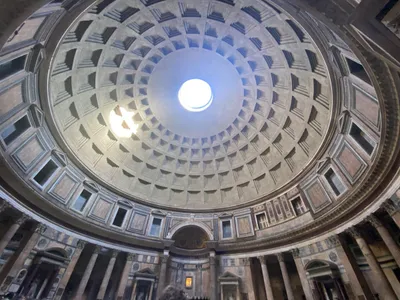
The Pantheon’s most remarkable feature is the approximately 9-meter diameter opening at the top of the dome called the “Oculus.” Also known as the “Eye of the Pantheon,” it serves to bring natural light into the interior.
Perfect Proportions of the Interior Space
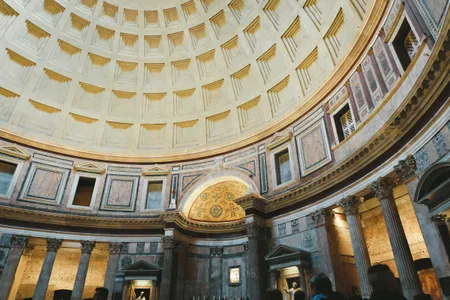
The Pantheon’s interior space is designed with perfect proportions, with both the diameter and height measuring exactly 43.2 meters. When you enter this space, you’ll be overwhelmed by its grandeur and vastness. The inside of the dome is decorated with five tiers of coffers (recessed square decorations), and the light streaming through the oculus creates a mystical atmosphere.
Raphael’s Tomb
Inside the Pantheon is the tomb of Raphael, the Renaissance master painter. Raphael requested in his final wishes to be buried in the Pantheon and passed away at the young age of 37. His tomb, located on the left side as you enter, bears the inscription “Here lies Raphael.” Opposite his tomb is that of King Victor Emmanuel II, who unified Italy.
How to Visit the Pantheon
Ticket Purchase Methods and Types
Pantheon tickets can be purchased on-site or online. The price is 5 euros. Purchasing on-site may involve waiting times during busy periods. Since it gets especially crowded during tourist season and weekends, online advance purchase is recommended.
On-site Purchase Method
On-site, you can purchase tickets at the main entrance. The line on the right side of the entrance is for credit card payments, and the left side is for cash only.
Online Purchase Method
For online purchases, there’s an additional service fee (up to about 1.5 euros) on top of the 5 euro ticket price, depending on the payment method. You’ll need to select a specific one-hour time slot.
Opening Hours
The Pantheon’s admission hours are 9:00 AM to 7:00 PM daily (last entry at 6:45 PM). Note that the last entry may be earlier on certain days (March 19, April 1, etc.).
Time Required for Visit
A visit to the Pantheon typically takes about one hour. Although the interior is spacious, it’s a single space, allowing for efficient exploration.
Tips for Visiting the Pantheon
- Entry is not permitted in revealing clothing (shorts, sleeveless tops, etc.).
- The recommended time to visit is in the evening when it’s relatively less crowded.
- If you visit on a rainy day, you can see rain entering through the oculus. However, be careful as the floor may become slippery.
- Be vigilant against pickpockets and theft. Take extra care of your valuables, especially during crowded times.
Tourist Attractions Around the Pantheon
- Trevi Fountain: About an 8-minute walk from the Pantheon. This world-famous fountain is known for the tradition of throwing coins to make wishes.
- Piazza Navona: A beautiful square about a 5-minute walk from the Pantheon. Famous for the “Fountain of the Four Rivers.”
- Church of St. Ignatius: A church famous for its trompe l’oeil ceiling, within a 10-minute walk from the Pantheon.
